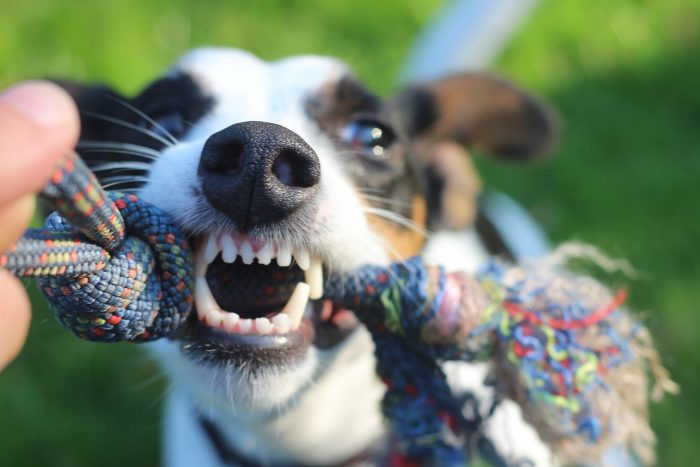Ask the Vet: Keep your pet’s smile white
By Matthew Kearns, DVM

I just returned from a veterinary conference and I thought it wise to attend some lectures on periodontal disease in dogs and cats just to update myself with the latest information. One of the lectures focused on home care to prevent periodontal disease. Studies have shown that 85% of pets have some degree of periodontal disease by age three.
Periodontal disease refers to pathology of the structures around the tooth: gingiva (gums), the periodontal ligament, perialveolar bone. Periodontal disease begins with plaque. It has been proven that even within 24 hours of a professional cleaning, a thin film of bacteria, saliva, and food (also known as plaque) accumulates on the enamel of the tooth. Plaque that is not removed mineralizes within 10 days into tartar or a calculus.
Once tartar takes hold a shift develops from aerobic bacteria (bacteria that need oxygen to survive) to nasty anaerobic bacteria (those that need little or no oxygen to survive). Anaerobic bacteria secrete toxins that inflame the gums and lead to small abscesses or pockets under the gums. Bacteria start to destroy the support structures around the tooth which is very painful. If not treated then the tooth will need to be removed.
Brushing is still the most effective way to prevent the development of plaque and tartar. There are a variety of toothbrushes available for pets. Make sure the toothpaste is veterinary approved. Swallowing human toothpaste is harmful because it has too much sodium, fluoride, and sweetened with saccharin.
Pet safe toothpaste comes variety of flavors that pets will like (chicken, beef, fish, etc). When you first begin just to put a little toothpaste on the end of the brush and let your pet investigate. Hopefully they sniff, lick, or even just chew on the brush. Start by gently just brushing the front teeth. Once they tolerate that, start to work towards the back teeth.
If this makes you groan, you are not alone. I myself do not have time to brush my own pet’s teeth every 24 hours and, even if I did, they would not let me. There are other options. Certain prescription diets (Hill’s t/d®, and Purina Pro Plan DH®) literally clean the teeth as your pet eats. There are also treats that do the same. Look for the Veterinary Oral Health Council (VOHC) seal on the packaging. These insure the product is safe and effective. If you can’t find a VOHC approved treat, remember this slogan: “if you wouldn’t want to get hit in the knee with this dental treat/chew, don’t let your pet chew on it.” That means if it is too hard your pet runs the risk of damaging their teeth.
Rinses are the least effective because there is no abrasive component to remove plaque. Look for the VOHC seal of approval. The safest and most effective rinses contain chlorhexidine. Chlorhexidine is most effective against the development of plaque and chlorhexidine-based rinses are considered the gold standard of veterinary oral rinses. Rinses containing xylitol, or fluoride should be avoided in my opinion because of their potential for toxicity.
This is not a complete list of dental home care products so, as always, please consult with your own veterinarian for a more in-depth conversation. In addition, I can’t guarantee that even if you follow through with all these recommendations that your dog or cat will not need professional dental care (including extractions), but it certainly helps.
Dr. Kearns practices veterinary medicine from his Port Jefferson office and is pictured with his son Matthew and his dog Jasmine.







